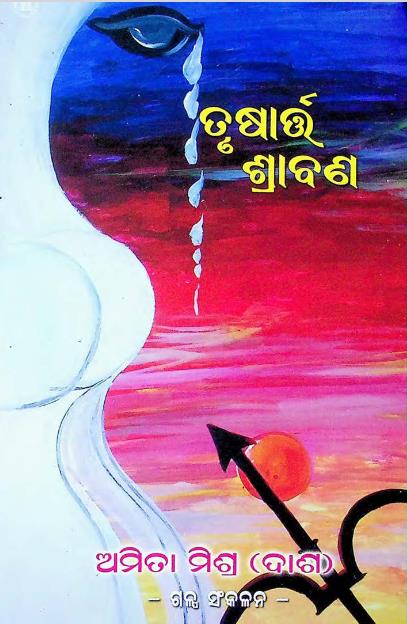In the realm of Odia literature, poetry serves as a powerful medium through which emotions, experiences, and the essence of life are captured with delicate sensitivity. One such compelling addition to this rich tapestry is Amita Misra’s poem Trusarta Sraban, published in 2020. This poignant piece explores the various dimensions of human emotions, weaving a narrative that transcends time and resonates deeply with the reader.
Trusarta Sraban translates to The Drizzle of July, evoking an imagery that is closely associated with monsoons in Odisha. Misra employs the metaphor of rainfall, a crucial aspect of life in agricultural societies, to symbolize renewal, hope, and the bittersweet nature of memories. The poem opens with vivid descriptions of nature awakening under the gentle touch of rain, an allegory for the rejuvenation of the human spirit. The sound of raindrops dancing on leaves, the vibrant colors that emerge post-rain, and the cool breeze all capture a sense of peace and tranquility, inviting readers to pause and appreciate the beauty of life.
However, as one delves deeper into the verses, it becomes apparent that Misra intertwines this natural imagery with emotional currents that speak to the human condition. The poet’s reflections shift seamlessly from the external beauty of the rainy season to more complex internal landscapes. Themes of nostalgia, longing, love, and loss thread through the poem, ultimately creating a rich tapestry of experience that mirrors the unpredictability of life itself.
Misra’s mastery lies in her ability to evoke profound imagery while grappling with deep-seated emotions. As the rain provides nourishment to parched earth, so too do the memories of past relationships, both cherished and painful. Each stanza unfolds with a careful layering of emotions, reflecting the interconnectedness of nature and personal experiences. The reader is invited to empathize with the speaker’s journey, as they navigate through rain-soaked memories, contemplating the interplay between happiness and sorrow.
The poem also prompts us to ponder the passage of time. Just as the rains come and go, so too do moments in our lives. Trusarta Sraban serves as a reminder to embrace both the joyful and melancholic aspects of existence. Misra’s use of imagery emphasizes the cyclical nature of life—rain brings growth, yet it can also lead to flooding. This duality encapsulates the essence of human emotions, reminding us that joy and pain are often intertwined.
Moreover, Misra employs a blend of traditional and contemporary styles, making her poetry both accessible and relatable to a wide audience. Her heartfelt expressions, coupled with a rhythm that complements the imagery, create an immersive experience for readers. The use of colloquial language adds an authenticity that resonates with those familiar with Odia culture and traditions.
In conclusion, Trusarta Sraban by Amita Misra stands as a testament to the power of poetry to evoke emotion and introspection. Through vivid imagery and a rich exploration of human experiences, Misra invites readers to reflect on their own journeys. The poem serves as a celebration of life’s complexities, reminding us that with every drizzle of July, there lies a profound story waiting to be told—a reminder that in every memory, whether filled with joy or sorrow, there is beauty to be found.
Books Info
| Books name | Trusarta Sraban/ତୃଷାର୍ତ୍ତ ଶ୍ରାବଣ |
| Author | Amita Misra |
| No Of pages | 106 |
| Publisher | Dr. Sontosh Kumar dash |
| Publication | 2020 |
| Printed At | Bashudha Computer |
| Distributor | NA |

